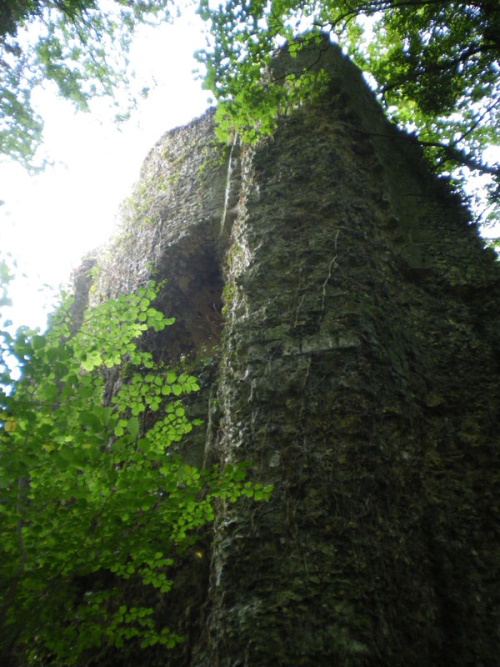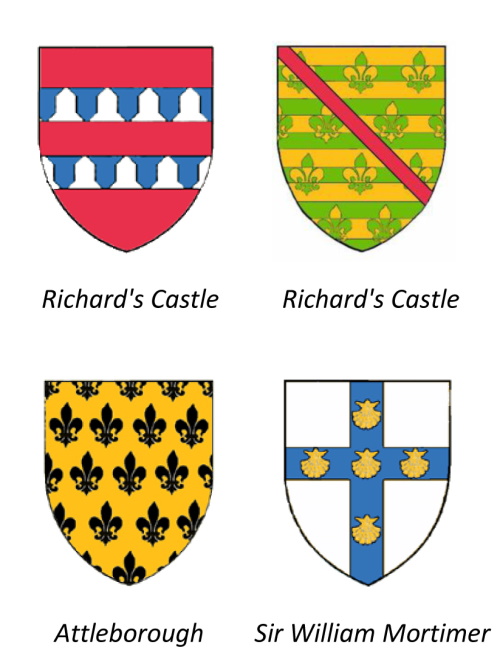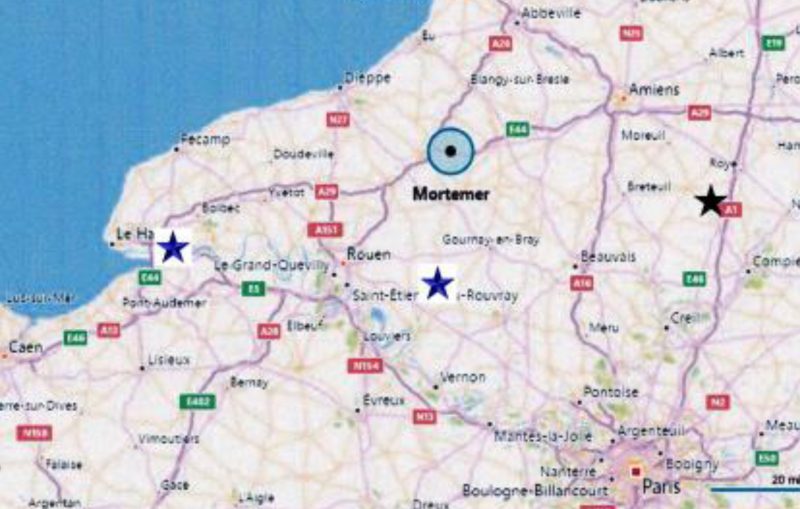Their Origins in Normandy
Like so many old English families, the Mortimers were Normans who arrived in England in the wake of William the Conqueror ‘s invasion of 1066. But it is rather surprising to learn that they adopted the name ‘de Mortemer’ only a few years before the Battle of Hastings. The Mortimers were actually part of the Warenne family, another dynasty to thrive in England after the Conquest. Firm dates from this period are difficult to come by, but a Ralph de Warenne is recorded as being around in Normandy in both 1035 and 1050. A relative of Duke William, he had at least two sons. The eldest, another Ralph de Warenne was born around 1020 and his son, William de Warenne fought at the Battle of Hastings and was subsequently created Earl of Surrey.
The first Ralph had a younger son called Roger de Warenne who was made lord of Mortemer-sur-Eaulne (also known as Mortemer-en-Bray), a village about halfway between Rouen and Amiens, and he became known as Roger de Mortemer. This first ‘Roger Mortimer’ was to fall foul of Duke William and it happened like this. As well as the lordship of Mortemer, he had other lands, some of them held of Ralph de Montdidier to whom he owed feudal duty. In 1054, when Henry I, king of France, invaded Normandy, Roger was one of the leaders of a Norman force that defeated the French at the Battle of Mortemer. Prisoners were taken and Roger found himself in the embarrassing position of having captured his feudal lord, Ralph de Montdidier, who had fought with the French. He decided to release him, but when Duke William heard that he had done this he was furious and seized all Roger’s estates in Normandy. They were subsequently reconciled and Roger was given back all his lands except Mortemer, so the Mortimers’ ownership of the place from which they take their name was short indeed.
After 1066, William the Conqueror established three earldoms along the borders with Wales: Chester, Shrewsbury and Hereford. The castle at Wigmore was founded as one of a string of castles along the Welsh Marches by William’s great supporter, William fitzOsbern, the Earl of Hereford, sometime before 1070. Within a very few years , however, it had been granted to the Mortimers and this castle remained their chief seat or caput until the main male line died out in 1425. It is not known whether Roger de Mortemer ever came to England and the first Mortimer to live in the country for any length of time was his eldest son, Ralph, of whom there is written evidence between the years of 1070 and 1115.
Before beginning the story of the Mortimers in England, however, it’s important to introduce a couple of related matters. Perhaps surprisingly, the Mortimers of Wigmore were not the only Mortimers in England in the 12th century. The Mortimers of Chelmarsh were part of the Wigmore family, but there were also Mortimers of Richard’s Castle; of Attleborough; of Aberdour; of Coedmore and so on. None of these families can be conclusively connected to the Mortimers of Wigmore. Records from this period are incomplete and it is possible that the Mortimers of Attleborough, for instance, were a younger branch of the family, but firm evidence is lacking. If the Attleboroughs and the Wigmores were part of the same family, then they must have been quite closely related, given that the name Mortimer had not been in use for very many years. In that case one would expect to see some evidence of the family connection. But there is no such evidence – they didn’t, for instance, witness each other’s charters, as one might have expected.
The coats of arms of these other Mortimers are quite different from those of the Wigmore Mortimers, but it must be remembered that heraldry as we know it did not really become established until the second half of the 12th century, by which time, we assume, any split had already occurred.
As we’ve seen, the name Mortimer comes from a village called Mortemer in France. The word Mortemer brings together two French words, mort meaning dead and mer meaning sea or water. So the word Mortemer literally means dead water referring to a boggy or swampy area. Indeed in Latin documents, the Mortimers of Wigmore are usually referred to by the name de Mortuo Mari. Now the problem with that name is that areas of wet, boggy land occur in many other places too. Just 40 miles south of Mortemer-en-Bray is the Cistercian monastery of Mortemer and this has no connection with ‘our’ Mortimers. Indeed there are at least three other Mortemers within that same part of France. Anyone coming from a place called Mortemer might well be called de Mortemer, so we’re left with the problem that some or all of these other Mortimers in England might possibly be related, but that probably they weren’t. It is safer to assume that these other Mortimers had no family connection at all with ‘our’ Mortimers.

The remains of the castle at Mortemer


The circle shows ‘our’ Mortemer
and the stars three others